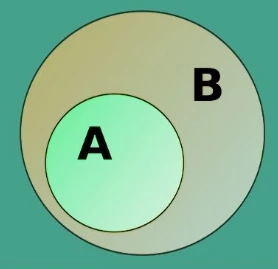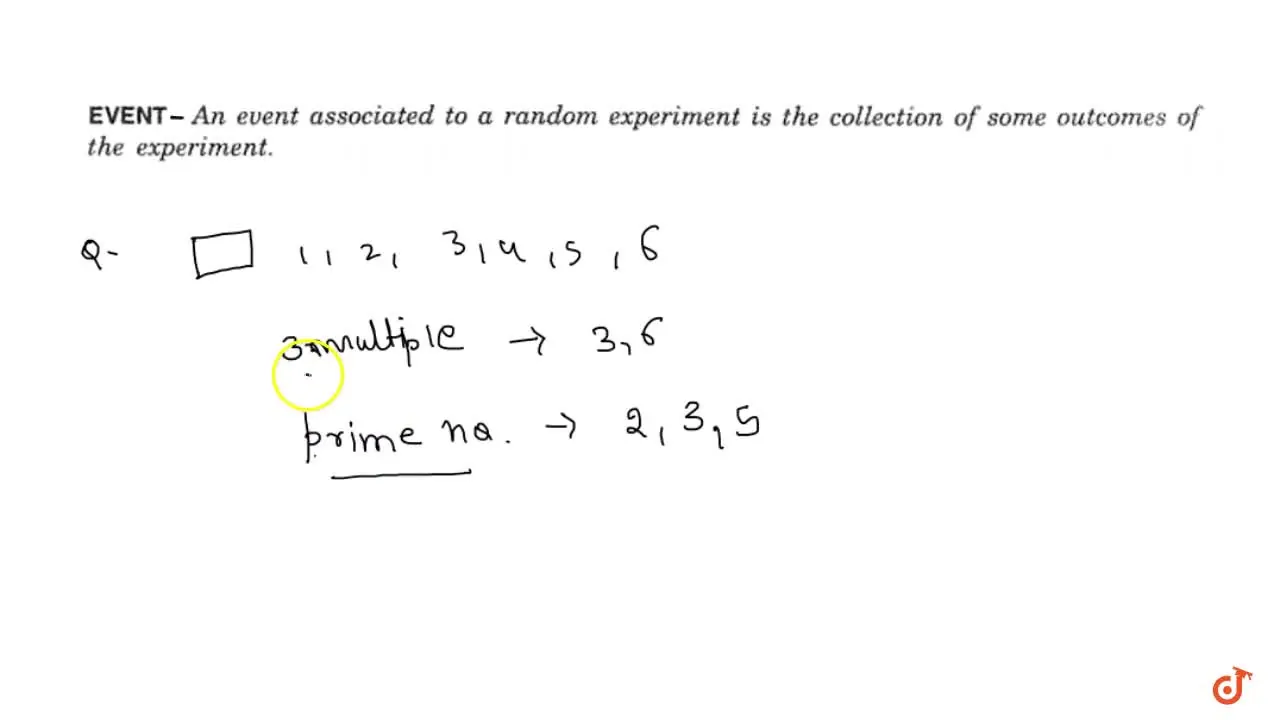Event
Event
In this chapter, we will discuss the event in probability which is a very interesting topic. Here, we will look at the different types of event as well. This would help in getting the right and clear idea about it that would not lead to confusion at all.
What are Events in Probability?
A set of outcomes of an experiment is called a probability event. It can be said that the subset of the respective sample space is a probability. The sample space or the individual space is the entire possible set of outcomes of a random experiment. Probability happens to be the likelihood of occurrence of an event. It is between 0 and 1 that the probability of occurrence of any event lies.

When it comes to the sample space for the tossing of three coins simultaneously, it is given by:
S = { (T , T , H) , (T , T , T) , (T , H , T) , (T , H , H ) , , (H , T , H) , (H , H, T) , (H , T , T ), (H , H , H)}
In order to find only the outcomes having at least two heads; the set of all such possibilities can be given as:
E = { (H , H ,T), (H , T , H) , (H , H ,H) , (T , H , H)}
Thus, a subset of the sample space is an event, i.e., E is a subset of S.
A lot of events can be associated with a given sample space. For any event to occur, it is important to note that the outcome of the experiment must be an element of the set of event E.
Probability of Occurrence of an Event
The probability of occurrence of any event is defined as the number of favourable outcomes to the total number of outcomes. So, the probability that an event will take place is:
P(E) = Number of Favourable Outcomes / Total Number of Outcomes
Related Videos:
- Presentation of data
- Raw data or ungrouped data
- Array or arrayed data
- Construction of a frequency distribution
- Measures of central value
What are the types of Events in probability?
Coming to the different types of events in probability, they are:
- Impossible and Sure Events
- Independent and Dependent Events
- Complementary Events
- Simple Events
- Compound Events
- Event E1 but not E2
- Mutually Exclusive Events
- Exhaustive Events
- Events Associated with “OR”
- Events Associated with “AND”
Now, let us understand these events in brief to get a clear idea:
Impossible and Sure Events
If 0 is the probability of occurrence of an event, then such an event is known as impossible event. On the other hand, if 1 is the probability of occurrence of an event, then it is known as a sure event. So, here, it can be said that the sample space S is a sure event while the empty set ϕ is an impossible event.
Independent and Dependent Events
If there is no effect of the occurrence of a particular event by the existence of any other event, such events are known as an independent event in probability. On the other hand, dependent events are those which are affected by other events.
Complementary Events
There always exists another event for any event E. So, this is represented by the remaining elements of the sample space S.
E1 = S − E1‘
When it comes to the rolling of a dice, the sample space S is given as S = {1 , 2 , 3 , 4 , 5 , 6 }. If all the outcomes are represented by the event E, which is greater than 4, then E1 = {5, 6} and E1‘= {1, 2, 3, 4}.
So, here E1‘ is the complement of the event E1.
Similarly, the complement of E1, E2, E3……….En will be represented as E1‘, E2‘, E3‘……….En‘
Simple Events
Simple event is any event that consists of a single point of the sample space. For example, if S = {52, 76, 87, 79, 90} and E = {76} then E is a simple event.
Compound Events
If there is any event that consists of more than one single point of the sample space then such an event is called a compound event. If S = {66, 78, 96, 64, 89}, E1 = {66, 64}, E2 = {78, 66, 89} then, E1 and E2 represent two compound events.
Event E1 but not E2
The difference between both the events is represented in this case. Event E1 represents all the outcomes that are present in E1 but not in E2. So, here, the event E1 but not E2 is represented as
E1, E2 = E1 E2
Mutually Exclusive Events
Mutually exclusive events are those when the occurrence of one event excludes the occurrence of another event. Here, we can discuss with an example, if S = {1 , 2 , 3 , 4 , 5 , 6} and there are two events E1, E2 such that E1 consists of numbers less than 3 and E2 consists of numbers greater than 4.
Here, E1 = {1, 2} and E2 = {5,6} .
Then, we can say that E1 and E2 are mutually exclusive.
Exhaustive Events
If all the events happen to consume the entire sample space together, then the set of events is called exhaustive.
Events Associated with “OR”
Events Associated with “OR” means that either event E1 or E2 or both are associated. When it comes to representing OR in probability, the union symbol (∪) is used.
Thus, the event E1∩ E2 represents E1, E2.
In case there are mutually exhaustive events E1, E2, E3 ………En associated with sample space S then,
E1 U E2 U E3U ………En = S
Events Associated with “AND”
The intersection of elements that is common to both the events is when two events E1 and E2 are associated. The intersection symbol (∩) is used in representing AND in probability.
Therefore, the event E1, E2 denotes E1 and E2.
Important Chapters:

Similar Questions
The probability of an event A is 45. The probability of an event B, given that the event A occurs is 15. The probability of event A, given that the event B occurs is 23. The probability that neigher of the events occurs is
View SolutionLet A, B, C be three events and ¯¯¯A,¯¯¯B,¯¯¯C be their corresponding complementary event. If the probabilities of events B,A∩B∩¯¯¯Cand¯¯¯A∩B∩¯¯¯C are 56,12and14 respectively, then the probability of the event B∩C is
View SolutionFill in the blanks: Probability of a sure event is .......... Probability of an impossible event is ........... The probability of an event (other than sure and impossible event) lies between ........ Every elementary event associated to a random experiment has ....... probability. Probability of an event A+ Probability of event '¬ A' =......... (vi) Sum of the probabilities of each outcome in an experiment is ........
View Solution


